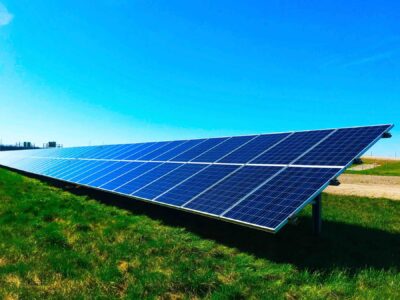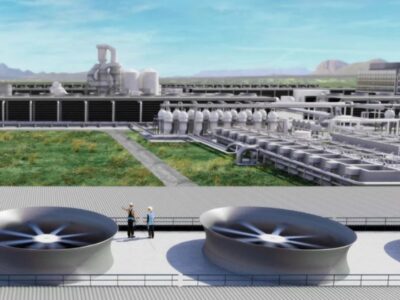Several Mining Companies Launch Sustainable Initiatives to Lessen Environmental Impact.
If you want an idea of the impact mining has on the environment, consider this: The footprints of mining operations are so vast that you can see them from outer space, with “large areas of excavation standing out in a sea of green forest,” according to a report from the International Institute for Sustainable Development (IISD).
The good news is that certain mining community sectors are working to address the problem. As IISD noted, new technologies have been developed to lessen mining’s impact on the environment, including waterless and zero-waste mines.
Several large mining companies are investing heavily to lower their carbon footprints. One of them is Australia’s Fortescue Metals Group, which recently announced plans to spend about $6.2 billion to eliminate the use of fossil fuels and achieve “real zero terrestrial emissions” across its iron ore operations by the end of the decade.

The plan includes installing two to three gigawatts of renewable energy generation and battery storage and expanding the company’s fleet of low-carbon vehicles and locomotives.
Most of the changes and upgrades will be undertaken between fiscal years 2024 and 2028. Once the overhaul is completed, Fortescue expects to displace about 700 million liters of diesel and 15 million gigajoules of gas per annum by 2030. Another goal is to prevent the emission of 3 million tonnes of carbon dioxide equivalent per year.
As Bloomberg noted, Fortescue’s initiative follows similar plans by larger mining companies such as BHP Group and Rio Tinto Group. Rio aims to cut its operational emissions in half by 2030, while BHP has designed to reduce emissions by 30%. Both are targeting net zero by 2050.
Fortescue’s goal to achieve real zero by 2030 is nothing if not ambitious, experts say.
“Can it be delivered on time by 2030? It would be a world first if it was,” Tim Buckley, an energy analyst at Climate Energy Finance, told Bloomberg in an interview.
According to a Global Mining Review report, Fortescue’s current decarbonization journey started during the early months of the COVID-19 pandemic. It was then that Fortescue, the world’s fourth-largest iron ore producer, began to explore technology, demand, and resources for the green energy ecosystem. It later developed the world’s first mining truck to run on hydrogen.

Fortescue and other mining firms have gotten further incentives to decarbonize from both shareholder pressure and government programs that aim to drive investment in green energy.
An example of the latter is the U.S. government’s Inflation Reduction Act, which earmarks billions of dollars to produce components related to clean energy, such as solar photovoltaic (PV) cells, wind energy components, and battery cells.
Meanwhile, another mining conglomerate – London-based Anglo American – recently took a different route to decarbonization by launching its first sustainability-linked bond, valued at about €745 million. The bond, announced in September, includes the following terms tied to the company’s performance on climate, water, and job creation goals:
- Reduce absolute greenhouse gas emissions (Scopes 1 and 2) by 30% by 2030, compared to 2016
- Reduce the abstraction (or extraction) of fresh water in water-scarce areas by 50% by 2030 compared to 2015
- Support five jobs off-site for every job on-site by 2030
The coupon on the bond will increase by 40 basis points beginning in 2031 for each goal that is not reached.
Anglo American is a global producer of diamonds (through De Beers), copper, platinum group metals, iron ore, steelmaking coal, and nickel. The company has committed to being carbon neutral by 2040.





